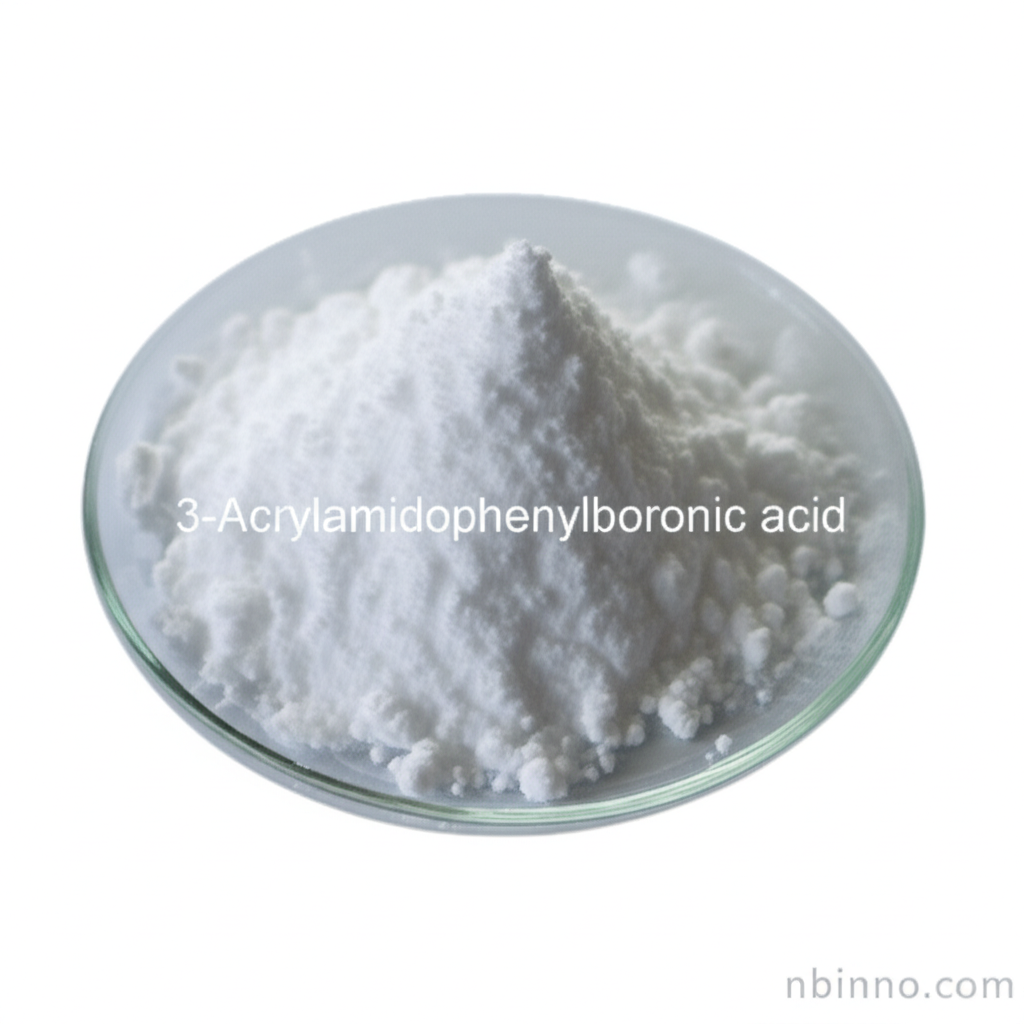3-Acrylamidophenylboronic Acid: Synthesis, Properties, and Applications in Advanced Materials
Discover the versatile chemical intermediate, 3-Acrylamidophenylboronic Acid (AAPBA), a key component for innovative solutions in materials science and biotechnology. Learn about its unique dual functionality and broad application potential.
Get a Quote & SampleProduct Core Value

3-Acrylamidophenylboronic acid
As a reliable supplier and manufacturer in China, we offer 3-Acrylamidophenylboronic acid, a crucial chemical intermediate with a unique combination of acrylamide and phenylboronic acid functionalities. This dual nature allows it to participate in polymerization reactions and engage in reversible covalent bonding with diols and sugars, opening avenues for advanced material design. Its synthesis is straightforward and controllable, making it an accessible component for various research and industrial applications.
- Leverage the unique properties of 3-Acrylamidophenylboronic Acid for polymerization reactions, creating advanced materials with tailored characteristics.
- Utilize the glucose-sensitive phenylboronic acid group for developing novel sensors and advanced drug delivery systems.
- Explore the potential of AAPBA in creating responsive materials that react to specific biological or chemical stimuli.
- Incorporate this versatile chemical intermediate into your research and development processes to drive innovation in biotechnology and materials science.
Advantages Offered
Versatile Reactivity
The presence of both acrylamide and phenylboronic acid groups in 3-Acrylamidophenylboronic acid allows for diverse chemical transformations and material constructions, supporting advanced synthesis of 3-Acrylamidophenylboronic Acid.
Biomedical Applications
Its ability to interact with sugars makes it ideal for developing glucose-sensitive sensors and innovative drug delivery systems, aligning with the growing demand for advanced drug delivery systems.
Material Science Innovation
AAPBA is a key component in designing smart polymers and responsive materials, pushing the boundaries of what's possible in materials science innovations.
Key Applications
Chemical Synthesis
Serves as a vital chemical intermediate in organic synthesis, facilitating the creation of complex molecules with specific properties.
Polymer Science
Used as a monomer for polymerization reactions, leading to the formation of functional polymers and copolymers for various applications.
Biotechnology
Its sugar-binding capabilities are leveraged in biotechnological applications, such as biosensors and diagnostic tools.
Medical Research
Enables the development of advanced drug delivery systems and responsive biomaterials for therapeutic purposes.
